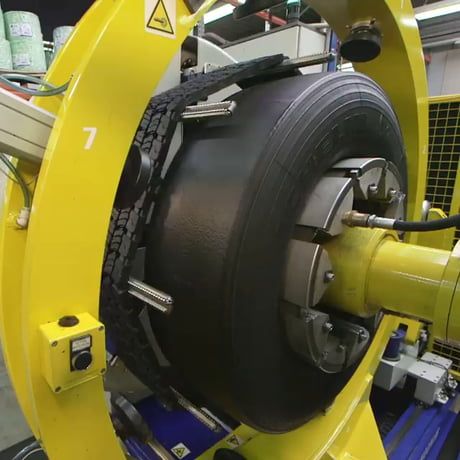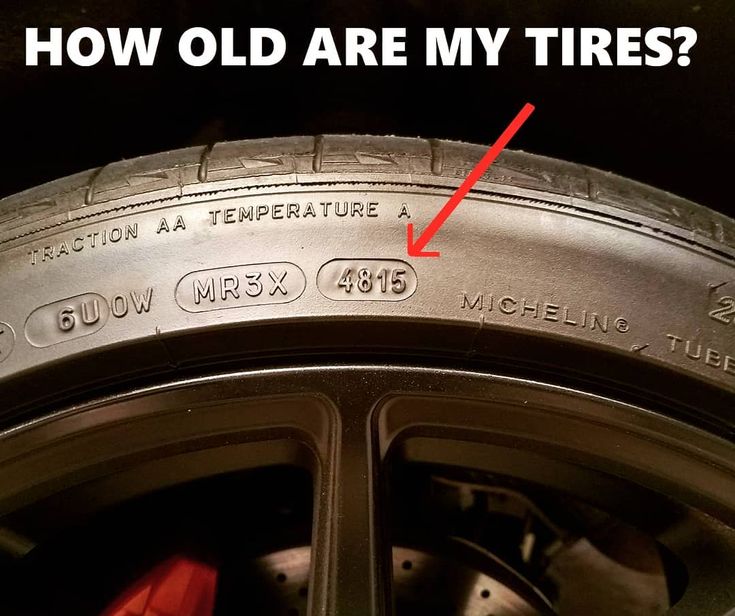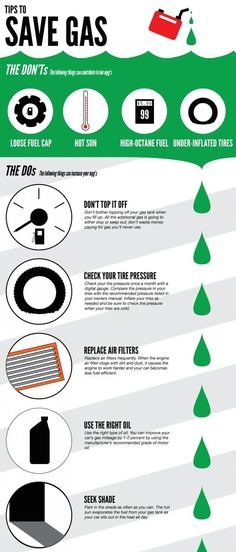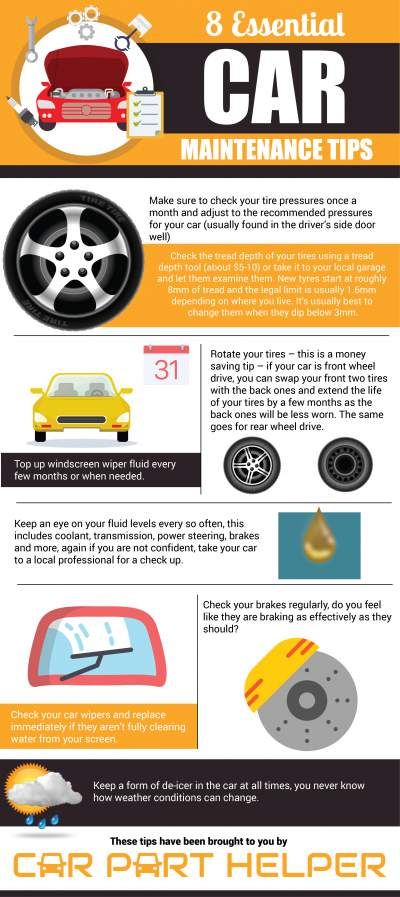It may be tentative, but tires do have an expiration date. There is a general consensus that most tires should be inspected, if not replaced, at about six years and should be absolutely be swapped out after 10 years, regardless of how much tread they have left. How do you know how old your tires are? There’s a code on the sidewall that you can read about here. Wear is a far more straightforward consideration: Tiremakers and safety advocates say a tire is worn out when its tread depth reaches 2/32 of an inch. That’s all fine, but what most car owners want to know is how long to expect a set of new tires to last before they need to be replaced.
“I wish it were simple to say how long each tire might last, but tires are different,” said Dan Zielinski, a spokesman for the U.S. Tire Manufacturers Association (USTMA). “Some tire manufacturers offer a warranty as high as 80,000 miles or more, reflecting confidence in that particular product’s longevity based on its engineering, technology, and design.
Other tires may be built to provide 30,000 miles of service.” Or less; some high-performance tires on cars driven aggressively will be worn to the 2/32-inch point without ever seeing 15,000 miles, but those are extreme cases.
The average American drives between 14,000 and 15,000 miles a year, according to data from the Federal Highway Administration. Zielinski said that, if you’re kind to your tires—that is, you aren’t constantly peeling out at stoplights and you properly maintain them—most new tires on the market today will last about 60,000 miles. For what it’s worth, the USTMA did a review of several thousand recently scrapped tires and found that most were three to four years old. There was no way of telling how many miles were on those tires, but it’s easy enough to multiply four years by 15,000 miles annually to confirm the rough approximation of tire durability.
If you want to figure out how soon you’ll wear out the tires on your car, Zielinski said it would be a good idea to start by determining how many miles you drive each year. Divide the number of miles on the odometer by how many years you’ve owned the car (starting, obviously, from when you first got the car and accounting for any mileage it had on it at that time). Then you can compare that with any advertised warranty on the make and model of the tires and figure out how many years of service to expect. If you live where winter tires are advisable and swap those onto the car for some months of the year, your regular tires will get less use and will endure for a longer period of time, but remember the caveats about tire age.
Zielinski also noted that if you hit the wear bars at 50,000 miles on a set of tires with a 60,000-mile warranty, for example, tiremakers that offer such coverage will typically prorate the price of a new set. In this example, you could expect a discount on the new set equal to one-sixth their price, or about 17 percent. You might not get it, though, if you decide to change brands.
You might not get it, though, if you decide to change brands.
Kypros/Getty Images
In general, the best way to preserve the life of your tires, and keep yourself and your passengers safe, is to maintain them properly. Here are some tire basics and maintenance tips:
Tread
A tire is considered unsafe, and should be changed, once its tread is worn down to 2/32 of an inch, according to the National Highway Traffic Safety Administration (NHTSA). Many tires have tread-wear indicators, which are little bars in the tread that show when the tire is worn down to replacement level. These will start making noise to alert the driver that they need attention. You can also use a penny: NHTSA recommends putting the penny in the tread with Abraham Lincoln’s head upside down and facing toward you. If you can see the top of Abe’s head, it’s time for new tires.
Pressure
To ensure even wear, tiremakers and auto companies recommend that vehicle owners check their tire pressures monthly. The pressure should be at the vehicle manufacturer’s recommended level, which is usually found in the car or truck’s doorjamb or in the owner’s manual. One quick and easy way to check tire pressure is with a handheld tire-pressure gauge, which you can find starting around $10 at an auto-parts store. Tire shops will often check the pressure for you. Some gas stations have digital readouts as part of their air pumps; these are not always accurate, though. It’s best to check the pressures when the tires are cold, meaning that they have not been driven on for several hours. So you’re better off checking them at home after the car has been parked overnight.
The pressure should be at the vehicle manufacturer’s recommended level, which is usually found in the car or truck’s doorjamb or in the owner’s manual. One quick and easy way to check tire pressure is with a handheld tire-pressure gauge, which you can find starting around $10 at an auto-parts store. Tire shops will often check the pressure for you. Some gas stations have digital readouts as part of their air pumps; these are not always accurate, though. It’s best to check the pressures when the tires are cold, meaning that they have not been driven on for several hours. So you’re better off checking them at home after the car has been parked overnight.
Balance and Alignment
Tires need to be round, and the tire/wheel combination needs to be balanced. Tire shops and mechanics will use a balance machine, which spins the wheel to see where high and low spots are and detects any imbalance. The tire shop will then add weights, which are hammered onto the wheel, to balance them. These shops can also make make sure your wheels are aligned to keep the car tracking straight, which also reduces tire wear.
These shops can also make make sure your wheels are aligned to keep the car tracking straight, which also reduces tire wear.
Rotation
Rotating your tires can help prolong their lives. For front-wheel-drive vehicles, the tires in the front will wear more quickly and can be swapped with the rear ones. The inverse is true for rear-wheel-drive cars and trucks. All-wheel-drive models, too, may need rotation. Most owner’s manuals contain a recommended pattern for rotating tires to spread the wear evenly. The USTMA recommends tires be rotated every 5000 to 8000 miles.
This content is imported from OpenWeb. You may be able to find the same content in another format, or you may be able to find more information, at their web site.
Maintenance and Tech, Motorcycles
Kyle Smith
05 November 2021
Share
Kyle SmithOf all the parts of your car that deteriorate from literally existing, tires are the most talked about. Ask a dozen folks at your cars-and-coffee group about tire age and you’ll somehow get 14 differing opinions about how seriously to take the aging of the rubber that connects your car to the road. It’s a legit safety concern, but generally the discussion will boil down to someone citing “something they heard from a friend a while back.” Luckily, Ari Henning took a deeper dive into answering the question—and he even put his body on the line to find out.
This video was distinctly aimed at motorcycles, but there is a point at which tires are tires, and all our vintage cars have tires that get used about as much as most motorcycles. That means we should really look at this research and study it to glean a bit about our rubber too, and there’s plenty to learn.
That means we should really look at this research and study it to glean a bit about our rubber too, and there’s plenty to learn.
The most common thought—and even I am guilty of this—is that tires should be replaced after five years even if they still have tread and appear serviceable. Ari asks the hard question, though: Is that a myth put out by the tire manufacturers to sell more tires, or simply a misunderstanding?
To resolve the first part of that question, he called some tire manufacturers and asked. The short answer is that it’s not that simple. Tires do age, but because that aging is due to a myriad of factors and is a safety concern, tire replacement guidelines rightfully fall on the conservative side. Five years, however, is a little too conservative. Only one producer, Avon, recommended anything close: seven years. Other brands—Bridgestone, Michelin, Dunlop, and Continental—agree that 10 years is the maximum lifespan for a properly maintained set of tires. That seems like a crazy number, but Ari decided to put his money where his motorcycle is. He found a 7-year-old set of Bridgestone RS10 tires, mounted them on the wheels of a GSXR1000 track bike, and put them to the test to see if it they would stick or slide.
That seems like a crazy number, but Ari decided to put his money where his motorcycle is. He found a 7-year-old set of Bridgestone RS10 tires, mounted them on the wheels of a GSXR1000 track bike, and put them to the test to see if it they would stick or slide.
Surprisingly, not only did his bike stay upright, but the “ancient” tires had enough grip to keep a pace similar to that of a brand new set. It’s not surprising. Why? Mainly because those old tires were stored properly. Here are some storage tips not just for motorcycle tires, but for your car’s tires as well.
Tires should be kept in a cool place. Heat makes the oil in the rubber compound rise out, and thus makes them turn rock hard faster.
Oxygen is necessary for life, but it also can kill a lot of things we hold dear—tires included. The elastomer molecules in tire rubber compounds get harder and weaker when exposed to oxygen. Sadly, there’s not a lot we can do here short of putting our tires in a nitrogen-filled bubble.
Ultraviolet exposure also serves to degrade tires, and thus the best storage solutions are out of the sun. If necessary, resort to a black trash bag. There’s a reason you see long-parked RVs or trailers with tire covers. It really does help.
A byproduct of combustion or oxygen being exposed to electrical current, ozone is the leading cause of dry rot in tires. That means storing tires in your workshop might be the worst place, compared to a crawlspace or basement (assuming there are no appliances in that basement.)
Mechanical stress is just a fancy way of saying carcass flex. It’s unavoidable when a tire is mounted and in use, but when storing a tire—like your winter tires or a spare set—it is best to not stack them, as that puts additional stress on the one at the bottom.
There is nothing you can do to completely halt a tire from aging, but with a little careful attention you can maximize the life of your tires and get the full long life they deserve. After all, it is a good bit longer than any of us thought.
After all, it is a good bit longer than any of us thought.
Tires are not the first freshness. As absurd as it may sound, the question of the release date of tires worries some buyers. In garages and tire shops, they answer the question in completely different ways - does the year of rubber production affect the quality of the tire? To be honest, probably not. Let's figure it out.
How to determine the year of manufacture of rubber? The manufacturer indicates the week and year of manufacture on the tire on the inner circle near the bead ring. 4 numbers in an oval - what we are looking for. For example, 4317 means that the tires left the assembly line in week 43 of 2017. It turns out, around October. In accordance with standards and common sense, you can absolutely safely buy new tires that were released 3-4 years ago. The manufacturer sets a warranty period. Usually it is 5 years. The service life can be much longer.
Yes, many tire manufacturers have tested new tires on par with 3 year olds at their test centers. Michelin's 2018 study received the biggest response. Rubber was tested in Asia, Europe and proved that new and three-year tires are one and the same. The result of the experiment was the advertising campaign “Tyres are not bananas” and the conclusions: three-year-old tires from the warehouse are no different from new ones, and the real life of high-quality tires is up to 10 years from the date of production.
Right. And in their research, Michelin experts spoke only about their tires, subject to strict adherence to the rules for long-term storage. In our country, everyone is guided by the norms and recommendations of GOST. It regulates the period during which the manifestation of defects is excluded - 5 years. During this period, they are considered new and are subject to sale in the usual manner.
A visual inspection is sufficient for this. For example, you decide to buy tires in Yekaterinburg or Nizhny Tagil. And you are offered four-year tires, explaining this by the total supply of such a batch to the Urals. Examine each carefully. The main beacons are surface integrity and color.
1. Exclude the presence of microcracks, even single ones - this is an indicator that the rubber has begun to dry for some reason.
2. The color of the tires should be a rich black, without whitish streaks and faded areas.
3. If you really want to, you can try on the wheel at the tire shop at the store. Rubber should remain intact, not give microcracks and require standard balancing.
In 99 cases out of 100, this will be the case. A quality tire may not show signs of aging after 5 years of proper storage. This is only possible with manufacturing defects.
No one has done exact research, but marketing is most likely to blame. In order to stimulate sales of new tires, it is logical to convince the client that it is dangerous to ride on old ones.
In order to stimulate sales of new tires, it is logical to convince the client that it is dangerous to ride on old ones.
Yes. The warranty period of 5 years is the period in which the manufacturer assumes responsibility for possible defects. Moreover, it is calculated with a margin - with the expectation of active operation in a constant mode in difficult road conditions. The actual service life is much higher. We are also given a 3-month warranty for shoes, but we wear high-quality models for several seasons and do not know anything about the release date.
If you remember about the Urals again, then you will also use tires in the summer-winter shift mode, that is, with breaks. Our catalog contains all the leaders of the tire market. Therefore, you can buy rubber in Yekaterinburg and other large cities of the Ural Federal District directly from the manufacturer and be sure of its quality.
Tires are one of the main and most obvious "consumables" of any car. At the same time, there are more than 42 million cars in Russia alone. With trucks and special equipment - about 59.7 million. This means that at least a million tons of used car tires are thrown into landfills every year. In this context, it is no longer a means of ensuring contact with the surface, but simply hazardous waste.
At the same time, there are more than 42 million cars in Russia alone. With trucks and special equipment - about 59.7 million. This means that at least a million tons of used car tires are thrown into landfills every year. In this context, it is no longer a means of ensuring contact with the surface, but simply hazardous waste.
Formally, automobile tires belong to IV hazard class waste, that is, low-hazard waste. But do not underestimate their danger - improperly disposed tires cause significant damage to the environment.
Under natural conditions, a discarded or buried tire takes hundreds of years to decompose. Upon contact with moisture, toxic organic compounds are washed out of them. Tires partially filled with water become breeding grounds for rats and blood-sucking insects. Millions of tires thrown into landfills are an environmental disaster in itself, even without taking into account the area occupied, therefore, over a good hundred years, mankind has developed several ways to dispose of this type of waste.
The first method involves the use of whole car tires - for example, to protect slopes from erosion, soundproof barriers along highways, and safety barriers for racing tracks. In the seventies of the last century, even artificial reefs were made from used tires! So, in 1972, the so-called Osborne Reef was created off the coast of Florida by the BARINC (Broward Artificial Reef) group with the support of Goodyear. More than two million tires were sunk to create breeding grounds for fish and oysters. The effect, unfortunately, turned out to be the opposite - the steel straps that fix the tires quickly rotted. Tires began to be thrown onto the beaches, they began to destroy neighboring coral reefs. For the last fifteen years, tires have been taken back - including with the use of army divers.
The second popular way to dispose of tires is incineration (including for energy purposes). In most cases, it is such disposal that causes maximum damage to nature and human health. The fact is that during combustion, not only zinc and sulfur oxides are emitted into the atmosphere, but also dioxins, which are classified as superecotoxicants of the 1st hazard class. These substances have mutagenic, carcinogenic and cumulative properties. In terms of toxicity, dioxins surpass almost any known poison, and, moreover, they do not decompose for decades, accumulating in the upper soil layer, as well as in all environmental objects, including plants and animals.
The fact is that during combustion, not only zinc and sulfur oxides are emitted into the atmosphere, but also dioxins, which are classified as superecotoxicants of the 1st hazard class. These substances have mutagenic, carcinogenic and cumulative properties. In terms of toxicity, dioxins surpass almost any known poison, and, moreover, they do not decompose for decades, accumulating in the upper soil layer, as well as in all environmental objects, including plants and animals.
Burning tires in high-temperature (1200-2800 degrees Celsius) furnaces of modern cement or pulp and paper plants is also not a panacea - according to many experts, with this method of disposal, dioxin emissions into the atmosphere are also present, albeit to a lesser extent. Installing highly efficient cleaning systems to trap harmful gases makes burning tires for energy unprofitable.
Another method of recycling used tires is pyrolysis. Tires are loaded into special reactors, where at high temperature in the absence of oxygen the product decomposes into components (carbon black, pyrolysis gas, as well as liquid fractions suitable for use as heating oil). The gas released during the process can also be used to produce fuel. This technology is demanding on equipment, and until recently was considered insufficiently effective. However, modern pyrolysis plants are already devoid of such shortcomings.
The gas released during the process can also be used to produce fuel. This technology is demanding on equipment, and until recently was considered insufficiently effective. However, modern pyrolysis plants are already devoid of such shortcomings.
The most cost-effective is the mechanical grinding of tires. When using this method, rubber and other polymers that make up the tire are obtained in the form of dispersed materials. The resulting crumb rubber takes on a new life in the form of various rubber products, such as car mats, speed bumps, playground surfaces, and so on. The most finely dispersed rubber crumb is used as an additive (from 5 to 20%) in the rubber compound in the production of new tires. There are several ways to mechanically shred tires based on different physical principles, such as using high impact velocities, low temperatures, or high pressures.
Despite the fact that in Russia today there are at least several large and a large number of small plants for recycling car tires using one of the listed industrial methods, these industries are far from being fully loaded. The reason is simple - most tires are disposed of in a simple and illegal way - throwing them into a landfill or burning them.
The reason is simple - most tires are disposed of in a simple and illegal way - throwing them into a landfill or burning them.
That's why the correct disposal and recycling of tires is one of the most important priorities in protecting human health and the environment. A new project from Nokian Tires, the Nokian Eco Challenge, serves this very purpose. As part of the project, the company assumes obligations to eliminate illegal tire dumps.
The mechanics is simple - anyone can submit an application for the liquidation of a landfill, on their own behalf or from an organization. As part of the project, tire dumps with a volume of at least 10 tons are eliminated, which, in terms of tires, is about 250 truck or 1,000 passenger tires. All collected tires will be recycled.
By the way, the Yaroslavl authorities came up with a similar initiative almost simultaneously. So, at the Skokovo landfill near Yaroslavl, a plant for crushing waste and recycling old tires is to be built this year.